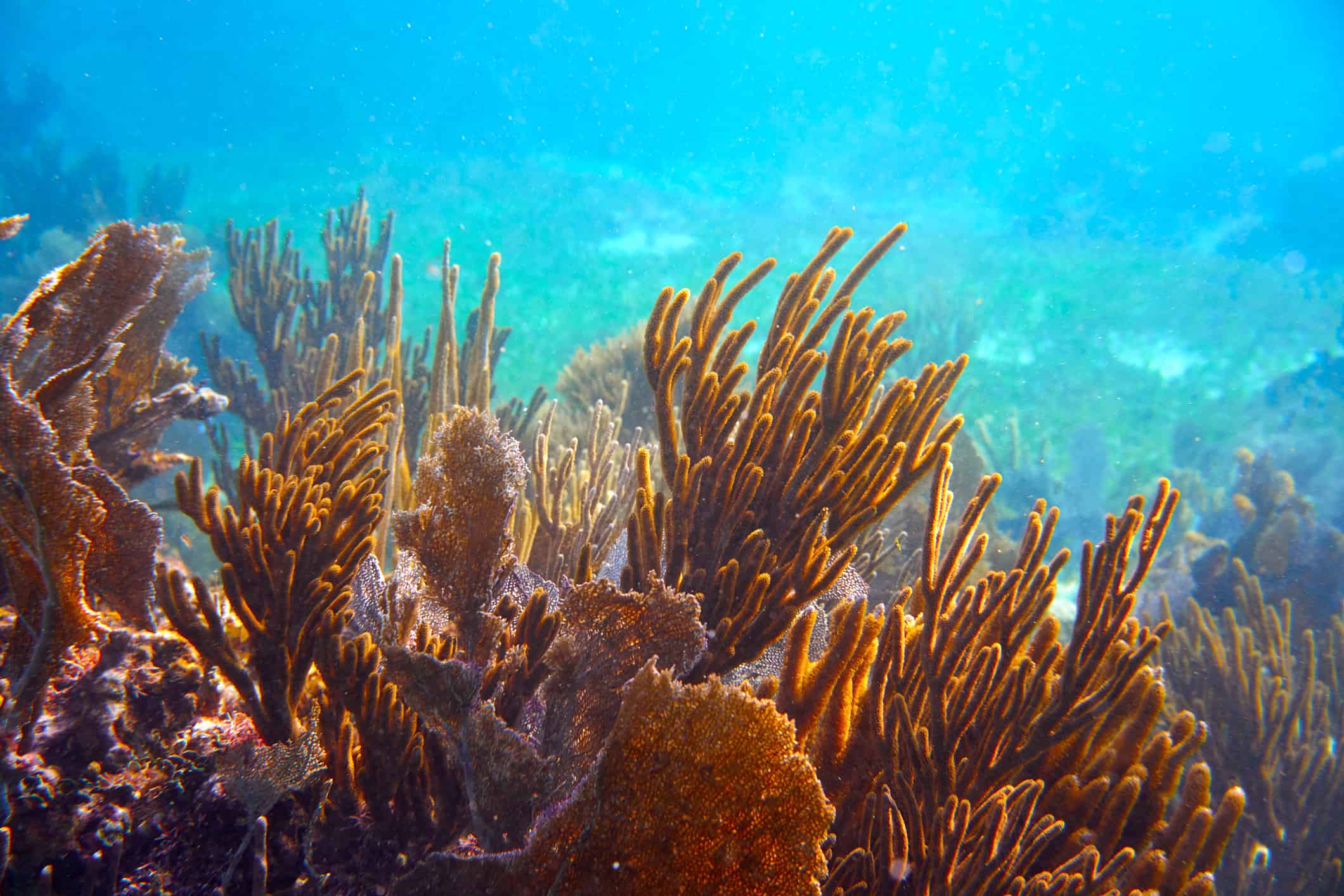Coral reefs are among the most beautiful and essential ecosystems found on our planet. These fascinating, intricate structures teem with marine life and play a pivotal role in preserving endangered species. From the colorful reefs found in Komodo National Park to the expansive and ancient networks of the Great Barrier Reef, these coral colonies are a true testament to the resilience and beauty of Mother Nature.
8. Palancar Reef, Mexico
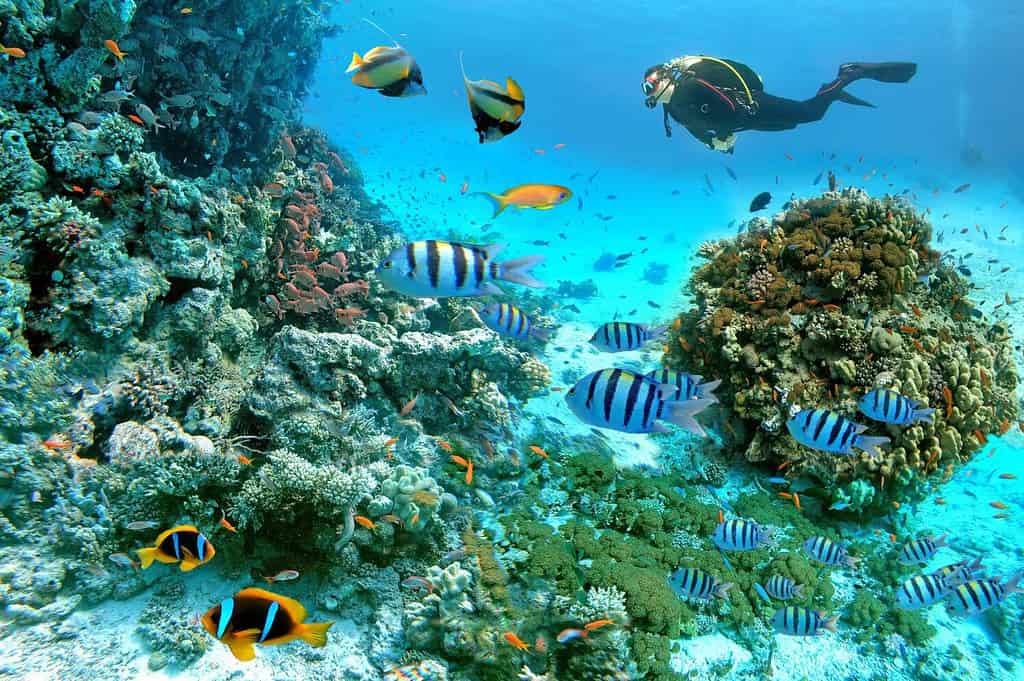
The coast of Mexico is home to some of the most incredible diving locations in the world.
©branislavpudar/Shutterstock.com
Kicking off our list is the stunning Palancar Reef off the coast of Cozumel, Mexico. Its unique, colorful formations come in the shape of vertical towers that host an abundance of diverse marine life. Pink, orange, and green coral make up these high-rising systems, which are a breathtaking sight and a bucket list location. Palancar Reef is one of Mexico’s oldest and largest coral reefs, spanning 3.5 miles from Cozumel into the Yucatan. Cozumel is one of the most gorgeous places to snorkel and scuba dive, as sea turtles regularly visit the reef to feed. Angelfish, groupers, and moray eels are a few of the many species that live within the vast coral networks. With a depth between 30 and 80 feet, Palancar Reef is relatively accessible to divers of all skill levels.
7. Komodo National Park, Indonesia
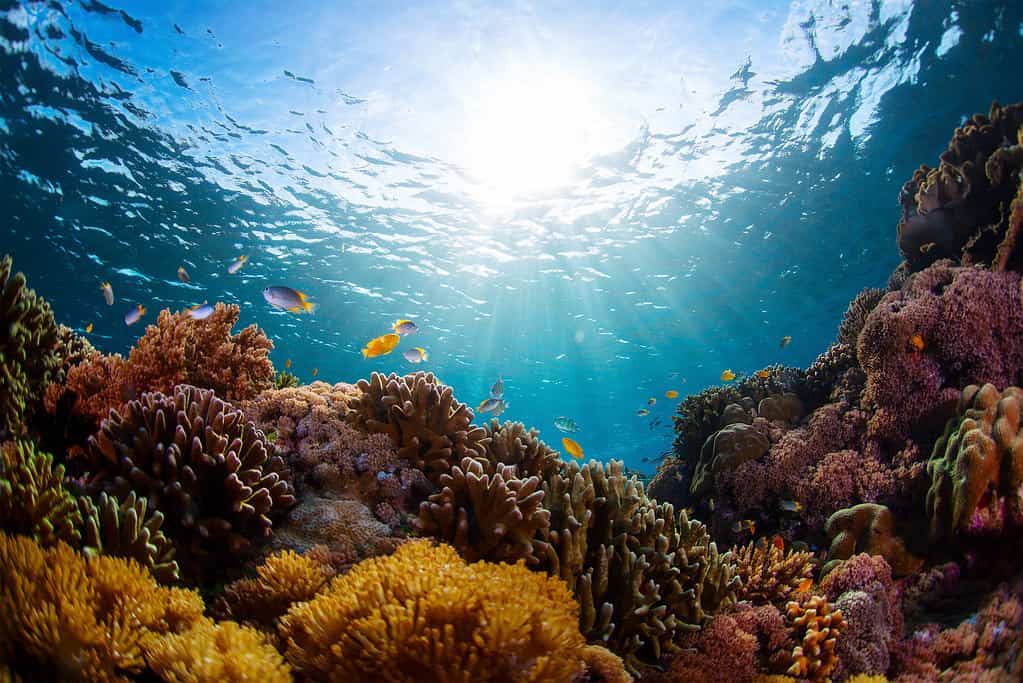
Coral reefs in Indonesia are incredibly colorful and host a variety of endangered species.
©mihtiander/iStock via Getty Images
Indonesia is home to countless beautiful coral reefs, but those found at Komodo National Park truly take the cake. While Indonesia initially created the national park to safeguard the Komodo dragon, it has gained recognition for its stunning networks of coral formations. Among the 260 different types of coral are over 1,000 species of tropical fish and approximately 70 unique species of sponges. Hammerheads and grey reef sharks frequent the East Indonesian coral reefs, while dolphins and whales come out during high tide. The depths of the Indian Ocean provide undisturbed living conditions, making it ideal for supporting all forms of life. Several rare and endangered species thrive in the untouched ecosystems found in the vivid reefs at Komodo National Park.
6. Belize Barrier Reef, Belize

Colorful red finger sponges and brown tube sponges thrive in the Belize Barrier Reef.
©iStock.com/dsabo
The 190-mile-long Belize Barrier Reef is the second-largest reef system in the world. Due to its massive size, scientists estimate that they have discovered only 10% of all species throughout the vast network of coral. There are 106 coral species in the Belize Barrier Reef, with brain and fan coral being the most abundant. Brain corals can live up to 900 years and grow over 6 feet tall. Strangely enough, they can sting and displace other coral to extend their colony. The predominantly pink and yellow reef is home to manatees, green sea turtles, and dozens of colorful starfish. In addition to the barrier reef, there are three bordering atolls, which are ring-shaped islands that also host biodiverse marine life. Each year, over 130,000 tourists visit the barrier reef, making it Belize’s top tourist destination.
5. Rainbow Reef, Fiji

The Rainbow Reef gets its name due to the diverse hues of the coral beneath the ocean’s surface.
©Mikael Häggstrom – Public Domain
Oceanographer Jacques Cousteau discovered the crystal-clear waters of the Rainbow Reef and deemed it the soft coral capital of the world. The Rainbow Reef lies in the Somosomo Straight in Fiji and became famous for the Great White Wall. This popular scuba diving site earns its name due to the gigantic colony of white coral that lives 213 feet below sea level. While the Great White Wall is certainly a tourist hot spot, the Rainbow Reef gets its name from the variety of vibrant coral near Taveuni. Manta rays, barracuda, and reef sharks reside near the towers of glistening coral, making it one of the world’s most famous diving locations.
4. Red Sea Coral Reef, Egypt
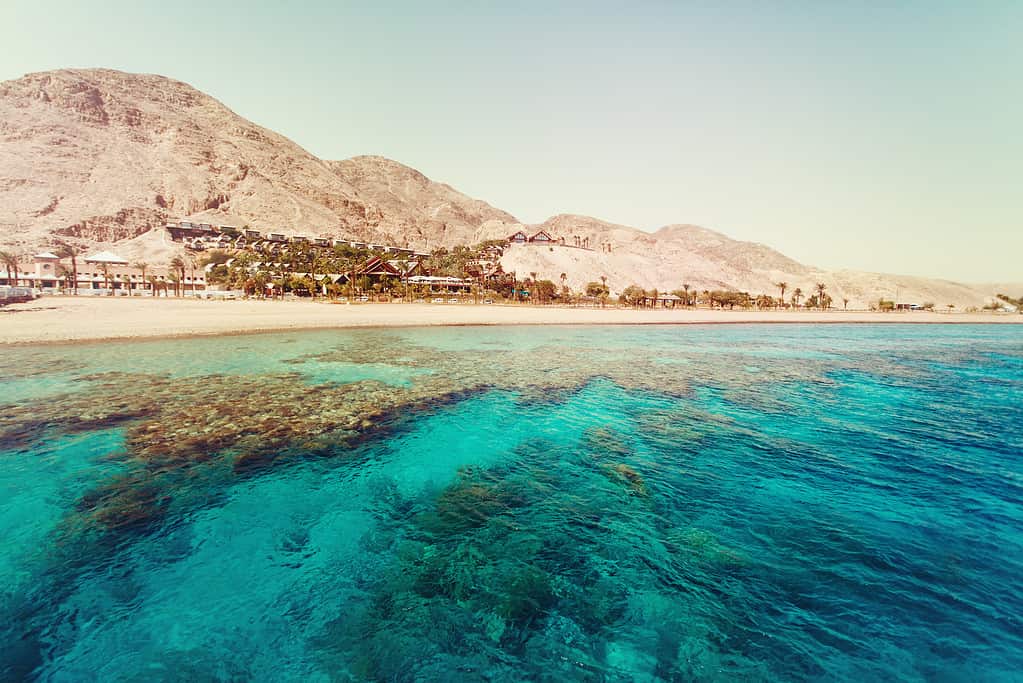
Reefs rest along the shores of the Red Sea in Egypt.
©DariaZu/iStock via Getty Images
The Red Sea Coral Reef is unquestionably the most unparalleled destination on our list. Due to the Red Sea’s high salinity levels, its coral reef can withstand extreme conditions and temperatures. Annual sandstorms pose a massive threat to the reef, yet the resilient coral adapted to its unforgiving surroundings. Such conditions are typically lethal to coral colonies, yet the Red Sea’s reef is over 1,200 miles long and contains red, pink, orange, and white colored coral.
The vast coral networks are over 5,000 years old, with reefs growing directly from the shoreline into the open sea. What makes these colonies so special is their high visibility and distinct variety of colors. Because of the abundance of red algae in the Red Sea, the water tends to give off a slightly red hue. White and red coral make up the majority of the Red Sea Coral Reef, yet there is a kaleidoscope of color found beneath the ocean’s surface.
3. Andaman Islands Reef, India

Cinque Island is famous for underwater diving due to the biodiverse marine life in the Andaman Islands Reef.
©Dushyant Kumar Thakur/iStock via Getty Images
Between the Bay of Bengal and the Andaman Sea lies the awe-inspiring Andaman Islands Reef. While the surrounding area is used as a commercial fishing port, the pristine coral colonies thrive in this underwater paradise. Bright orange and fluorescent pink corals have learned to adapt to global warming, building new ecosystems over the coral rubble of years past. Diving and snorkeling can be difficult, due to the sandy and cloudy waters of the resilient reef. Yet octopuses, moray eels, and sea stars are just a few of the 1,439 various species found within the Andaman Islands Reef. Despite overcoming unprecedented obstacles, the colorful and persistent reef is teeming with marine life.
2. Tubbataha Reefs National Park, Philippines
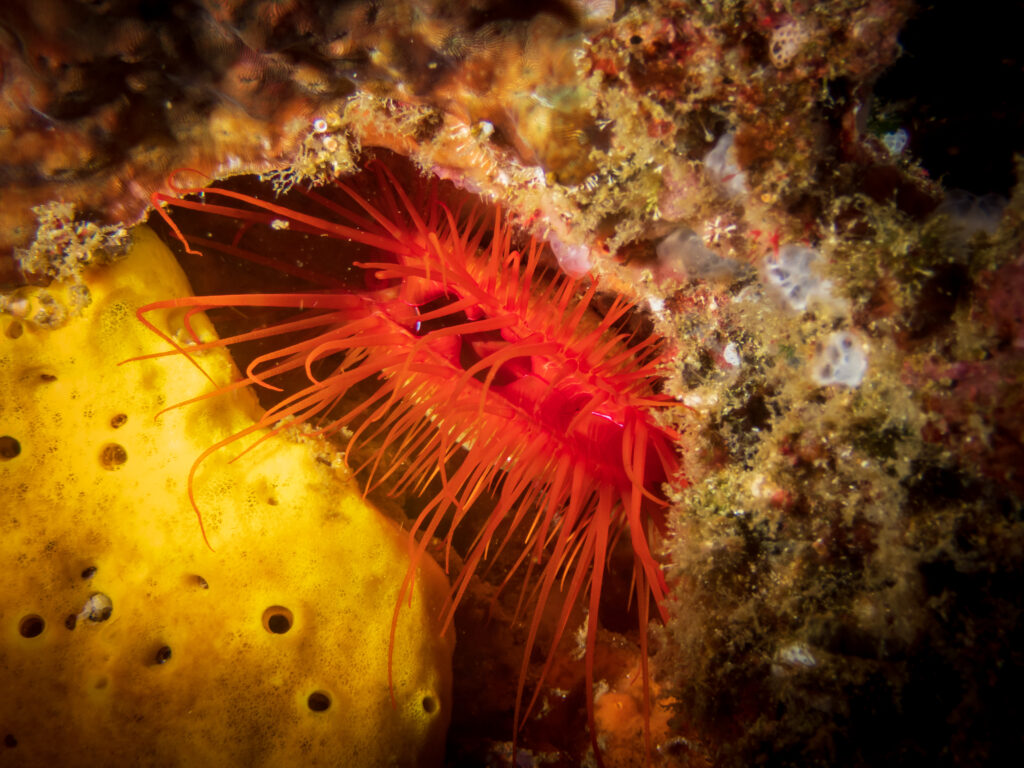
Electric clams or disco clams live in the intricate networks of coral in the Tubbataha Reef.
©alonanola/Shutterstock.com
Over 40% of the world’s reef fish live in the untouched Tubbataha Reefs. Throughout the national park, the bountiful array of coral stretches across 239,000 acres of open sea. They serve as home to 360 coral species and the nesting ground for Green sea turtles. Located in the middle of the Sulu Sea, the national park is recognized as Earth’s center of marine biodiversity. 13 species of dolphins and whales coexist with over 600 different types of fish and 100 distinct bird species. Overfishing and destructive fishing practices pose a great threat to the undisputed beauty of the Tubbataha Reefs. Since the coral networks stretch thousands of acres, it’s quite difficult to protect the entirety of the national park. However, thousands of endangered species manage to find a home in the gorgeous yellow and pink reefs in the Sulu Sea.
1. Great Barrier Reef, Australia
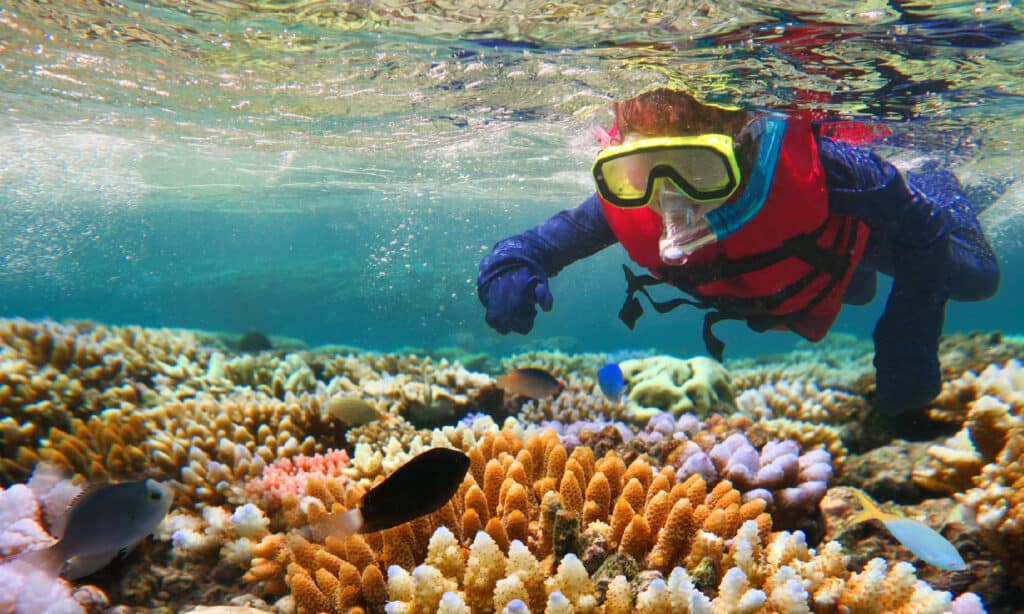
Over 1,500 species of fish live in the Great Barrier Reef in Australia.
©iStock.com/chameleonseye
The Great Barrier Reef in Australia is the largest coral reef system on Earth. It’s comprised of over 2,900 smaller reefs and is home to more than 1,500 species of fish. Coral living off of the coast of Australia dates back 20 million years and has overcome generations of coral bleaching and climate change. The network of reefs stretches 1,400 miles, making it the world’s largest single structure composed of living organisms. It’s so massive that it can even be seen from outer space. From humpback whales to saltwater crocodiles, the biodiversity found within the coral reefs is simply spectacular.
The Great Barrier Reef is inhabited by over 400 different types of soft and hard coral, creating a home for countless endangered species. Rising sea temperatures and ocean pollution aren’t the only threats posed to the intricate colonies of coral. The crown-of-thorns starfish prey on coral polyps and in 2000, nearly 66% of live coral were wiped out by the unsuspecting predator. Despite the litany of environmental threats posed to the Great Barrier Reef, the Australian government formed a plan to protect and preserve the reef until 2050.
Thank you for reading! Have some feedback for us? Contact the AZ Animals editorial team.

